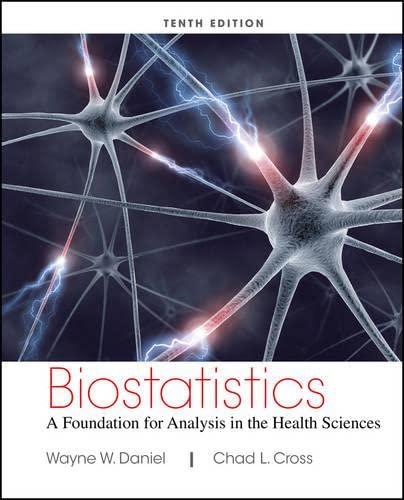Rodehorst (A-28) conducted a prospective study of 212 rural elementary school teachers. The main outcome variable was
Question:
Rodehorst (A-28) conducted a prospective study of 212 rural elementary school teachers. The main outcome variable was the teachers’ intent to manage children demonstrating symptoms of asthma in their classrooms. This variable was measured with a single-item question that used a seven-point Likert scale (INTENT, with possible responses of 1 ¼ extremely probable to 7 ¼
extremely improbable). Rodehorst used the following variables as independent variables to predict INTENT:
SS ¼ Social Support. Scores range from 7 to 49, with higher scores indicating higher perceived social support for managing children with asthma in a school setting.
ATT ¼ Attitude. Scores range from 15 to 90, with higher scores indicating more favorable attitudes toward asthma.
KNOW ¼ Knowledge. Scores range from 0 to 24, with higher scores indicating higher general knowledge about asthma.
CHILD ¼Number of children with asthma the teacher has had in his or her class during his or her entire teaching career.
SE ¼ Self-efficacy. Scores range from 12 to 60, with higher scores indicating higher self-efficacy for managing children with asthma in the school setting.
YRS ¼Years of teaching experience.
With the data TEACHERS, use stepwise regression analysis to select the most useful variables to include in a model for predicting INTENT.
Step by Step Answer:

Biostatistics A Foundation For Analysis In The Health Sciences
ISBN: 9781118302798
10th Edition
Authors: Wayne W. Daniel, Chad L. Cross






